Rare and quirky. Those are two words that would seem to perfectly describe this 1951 Armstrong Siddeley Station Coupe. Records are slightly vague on build totals, but figures of between 990 and 1,022 are the currently accepted totals. This particular one underwent a full restoration around 30-years-ago and seems to have withstood the test of time quite nicely. The relative rarity of these cars means that you are not likely to see many of them on US roads today, especially given that Armstrong’s target market for the Station Coupe was on an entirely different continent. If a quirky British classic is something that you would love to own, you will find this little beauty located in Philadelphia, Pennsylvania, and listed for sale here on Craigslist. The owner has set the asking price at $28,000. A huge thank you has to go out to Barn Finder Roger for referring this fantastic and rare British classic to us.
Production of the Station Coupe and its Utility Coupe sibling was something of a left-field decision for Armstrong Siddeley. Up until the end of World War II, their primary focus had been on the luxury car market, along with the production of aircraft engines. Once the dust from the war had settled, the company made the decision to produce something more utilitarian, and this was the catalyst for the production of the pickup siblings. However, the target market for the Station Coupe wasn’t the UK, and nor was it the USA. Armstrong Siddeley identified a growing niche market, and around 60% of their production run found its way to Australia. A number of vehicles were also exported to New Zealand, while several European markets also received a few cars. This particular example was located in the Netherlands and underwent a full restoration around 30-years-ago. This work has held up well, and the vehicle presents nicely in the most common color combination of a creamy shade of white with red accent stripes. The panels look very straight, and there isn’t a sign of rust. The trim and chrome appear good, as does the glass. These are all important points because some of these components are unique to the Station Coupe, and due to the rarity of that model, sourcing spares can be a bit of a challenge. Having said that, there is a really good Armstrong Siddeley Owners Club in the UK, and they seem to be very willing to assist owners to locate some of the more obscure pieces.
The interior of the Station Coupe presents very neatly, with no major issues. The starter button on the wooden dash is not labeled well, but the rest of the interior is very tidy. When you look at the gauges, it isn’t hard to deduce that the target market for the vehicle was a country that favored right-hand-drive. The fact that the speedometer is so far from the driver is not ideal from an ergonomics perspective, but that is how the car left the Coventry factory. I guess that if the next owner found this setup to be inconvenient, the speedometer and auxiliary gauges could be interchanged without impacting vehicle originality because swapping them back wouldn’t be a big job. However, leaving it as it is would potentially be a pretty decent conversation starter. It is also when we look at the vehicle’s interior that we get a look at the Station Coupe’s real point of difference when compared to its competition. Most light pickups of this era could seat two people normally or three at a pinch. This was one of the groundbreakers that offered a rear seat, making it capable of carrying four adults. Admittedly the rear seating doesn’t hold the promise of high levels of comfort on long trips, but as an alternative to either riding in the bed or walking, it would have looked quite attractive in 1951. I’ve been trying to think of another light pickup from this era that offered this feature that is so common today, and I have to admit that I’m struggling on that front. Still, with the number of knowledgable readers that we have here at Barn Finds if any were available, I’m sure that they will let us know. In fact, I would welcome that sort of information, so I’m looking forward to the responses.
From a mechanical perspective, the Armstrong Siddeley is certainly an interesting car. The engine is a 2,309cc 6-cylinder, producing 18hp. These horses find their way to the rear wheels via a 4-speed manual transmission. Quite unusually for a car of this era, the transmission features full synchromesh on all forward gears. A pre-selector transmission was also available, but this was an option that few people chose. Finding one of those today is the equivalent of striking gold. The rear suspension is provided by a solid axle and leaf springs, while the front is independent with torsion bars. The braking system was also interesting, with hydraulic operation for the front wheels, but mechanical operation for the rears. The drivetrain of the Station Coupe was restored with the rest of the vehicle 30-years-ago, and while the car is said to run and drive reasonably well, the owner says that it does require some work to return it to its best. He isn’t specific about what these needs might be, so hopefully, it will be little more than some general tinkering and tuning. Even if the brakes or steering require work, those parts aren’t that hard to find. The only issue is that the next owner might have some issues sourcing those parts in the USA, and may need to order them directly from the UK. Still, that is probably a minor inconvenience when you are looking at a vehicle like this.
When you look at the figures, it is interesting that 60% of all Station Coupes built by Armstrong Siddeley found their way to Australia. Having grown up Down Under, I can only recall ever seeing one of these on the road during my travels. Still, it is a pretty big country, and that means that any model where only 600 examples were imported has a better than even chance of hiding amongst the scenery. It isn’t clear how many have found their way to the US over the following decades, but given the car’s rarity, even when new, I wouldn’t be surprised if the total doesn’t manage to break into double-figures. That makes this a pretty special opportunity. So, as I said in the beginning, if a quirky British classic is on your wish list, then maybe you’re search is over with this car.





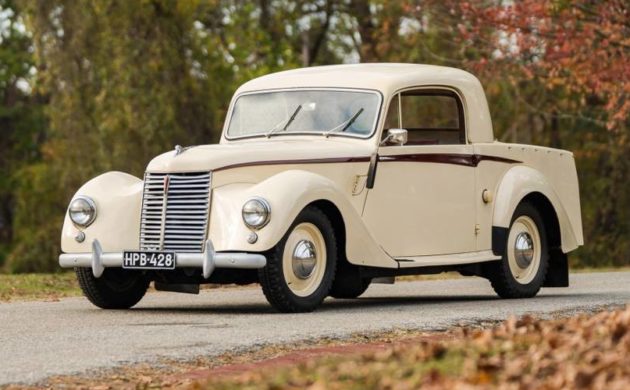
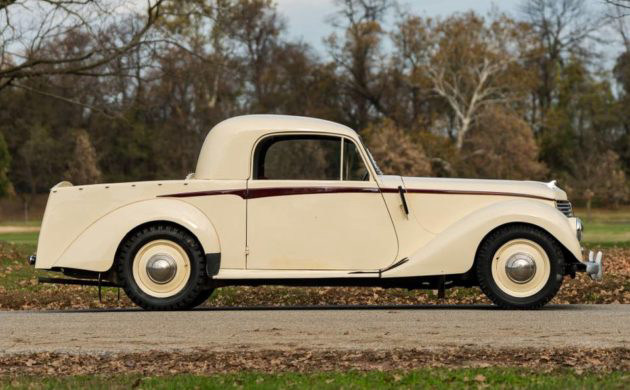
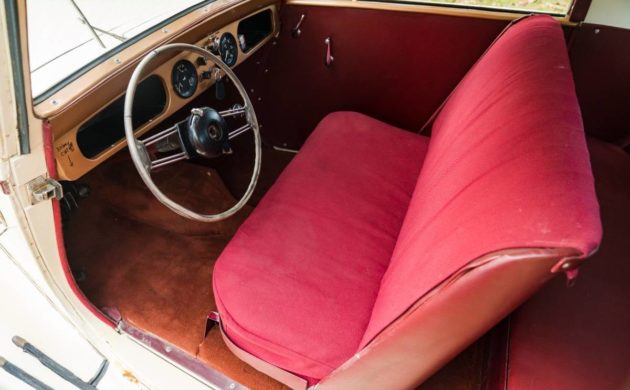

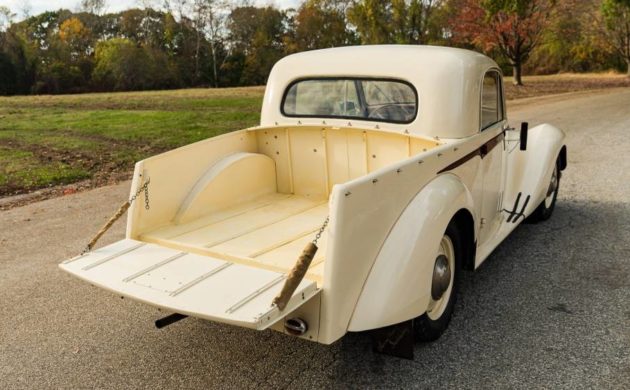
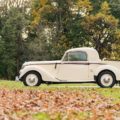
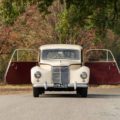
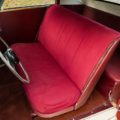



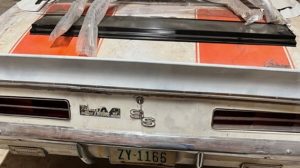
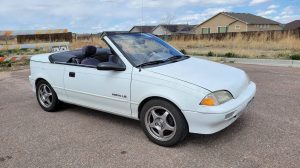


Figuring the cars were designed for right hand drive the speedometer would be toward the right side of the dash. If it’s a cable drive you might have to do some adapting or get a different cable to move it. Shouldn’t be a big job. Interesting vehicle. Never saw one before this one.
With only 18hp, I can’t imagine that you would have to be too concerned with how fast you are going…!!
18 hp was the “taxable horsepower,” calculated according to a government formula. The brake horsepower was somewhere around 70-75 hp, which isn’t too out of the ordinary for a light pickup in 1950.
There was a Japanese sub compact a while back that had the speedo in the center of the dash, which I thought was weird when I saw it. Does anyone here know the make?
Toyota Echos had the speedometer in the center of the dash as does my little Scion Xa! (You get used to it.) My 1964 Austin Mini Cooper also had it in the center of the dash.
Never seen one either, but I think I’m in love…
This sets a new standard for “Cool” !
I really like this
The car was residing in Finland, and was exported from there. It still has Finnish plates.
18 hp? The 2,3 litre engine churned out 75 hp. 18 is the tax horsepower rating.
It’s super cool, but you must have to work pretty hard to get 18HP out of 140 cubic inches. I thought the HP was a typo until I looked on Wikipedia. Would love to have a closer look at one.
Well, 18hp was the British tax bracket. Similar to how a Citroen 2CV means 2hp despite never having had an engine with less than 9 hp.
If memory serves me right I think the Armstrong Siddeley 6-cylinder engine used for these cars were 75 bhp.
That is one stylish car… er… pickup? I’d drive it with pride.
A six cylinder engine (did I read that right) and 18 HP? I didn’t know that was possible?
British cars were taxed based on their HP rating. I don’t remember the calculation, but it was based on stroke and diameter of the pistons and it was “favorable” for that rating to be low. Does not relate to BHP.
David thanks for the explanation on that HP rating and why it was SO LOW! It does make sense!
I’ve seen ONE of these in the UK,50 years age rotting on a garage forecourt a mile from where I now live.Never seen one since!
Google RAC HP rating…..
What an interesting vehicle. I grew up in Scotland and
been a car nut for the last 60+ years, yet have never heard of this model. Yes one of the local doctors had an Armstrong Siddeley 4 door, but a Ute/pick up – Nope!. I especially like the rear seat for practicality – dogs or small children.
Very quirky and very cool.
I would add it to my dream collection alongside the elusive Jaguar XJ13, Rover Alvis V8, Plymouth Superbird, 59 Imperial custom pick up, etc. etc.
At least my dream collection is inexpensive and I don’t have to admit to spending millions of dream dollars to my spouse.
Looks like a Volkswagen Kit car, but isn’t and slower to boot!
I love it. found this on YouTube
https://www.youtube.com/watch?v=beJ8M9nGWoY
I really don’t believe they built the numbers claimed in the description. It was a niche export model, very expensive from a niche manufacturer.
Nor did it make sense…..but nice to see
Thanks for the info Puhnto. Now I remember where I saw one, there is a lady in our neighborhood that had one. I would see it when I was walking our dog.
That’s a neat looking early Ute!
Hard to imagine walking out to the garage and thinking “today I’ll drive the Armstrong…
Nissan did a double cab utility in the mid 60’s with the 1500cc Austin designed engine
You Gents wondering about the horsepower rating, the British H.P. was rated at the rear wheels and the American H.P was rated at the fly wheel, so by the time you run it through the drive line there is quite a drop in the H.P. I hope that clears up a few questions.
What a looker….who cares how fast you’d be going…..slow so the peoples don’t snap their neck !
The Station Coupe proved very popular with graziers in Australia as it provided a comfortable car for the wife and himself on the weekend and still be able to carrying around a few sheep during the week. I’ve had the pleasure of driving a few Armstrong Siddeley Station Coupes and each fitted with the Wilson pre-selector gearbox which takes a little getting used to, but after that you start to wonder why others cars are so fitted. Lots of fun.
I owned one, same colours as this but mine was properly RHD and the only known survivor with a functioning Wilson Pre-Selector gearbox. Bonham’s sold it maybe 20 or more years ago.
A friend has an Armstrong 4 door sedan in York Western Australia. Over time he has restored it to great condition. The thing that impressed me greatly was that smooth engine. You could stand a glass of wine on the rocker cover and you had to listen carefully to make sure the engine was running.
They sure are one great looking car.
What a great car. Never seen one in the UK outside picture books. If it was RHD I’d be tempted to look into bringing it back to the UK, but with the pound currently on the floor I don’t think that’s going to happen anytime soon…
Two nice things about Armstrong Siddeley The bonnet (hood) mascot, a sphinx, just visible on the main photo. And they made jet engines in the 40s and 50s. Other than RR I can’t think of another car/jet engine manufacturer. Never heard of a Pratt and Whitney pickup. Any suggestions?
A “Ute” … like Joe Pesci?
Ahhh, I believe that’s spelled differently, as in “2 youts”!
When I was a newspaper delivery boy in the early 1960’s the local newsagent in Rosewood Qld had a Station Coupe to deliver the morning papers. From memory it was a grey colour and a pre select gearbox, the cabin roof had been removed and the papers were stacked on the front and rear seats, the driver would throw papers and myself and another would stand in the back tray also throwing papers. This whole set up worked very efficiently.